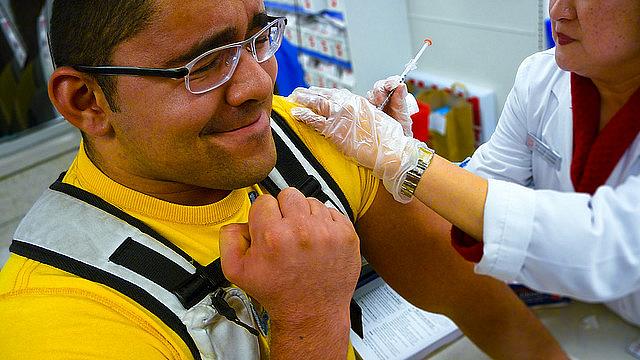Influenza 2011-2012: The CDC's Season Opener

My three-year-old and I got our flu shots (actually FluMist) this week, which makes today's release of the CDC's first-of-the-season flu surveillance report personally timely.
Unlike in past years, there's plenty of flu vaccine available this year, so much that the CDC says the supply could set a U.S. record. While flu activity is traditionally low at this time of year, I was surprised to see that "sporadic" flu activity (meaning a few cases, at most) already is being reported by 20 states and the District of Columbia, Puerto Rico and the U.S. Virgin Islands.
It's worth recalling that it was just two years ago during the first week of the CDC's 2009-2010 flu season surveillance that more than 12,000 cases of swine flu/H1N1 were reported and 43 children had died from the disease nationwide.
Seems so long ago, doesn't it?
If you're planning to report on this year's flu season, here are some still-relevant tips I highlighted last year:
1. Check the U.S. Centers for Disease Control's weekly flu report.
2. Call your state health department for a statewide look at flu activity; you'll want to ask for the infectious disease branch or similar division. Many states provide their own weekly reports, supplementing the CDC's national snapshot, including California. Here's a list of state health department websites.
3. If you're in a state with a large Kaiser Permanente presence, call and ask to speak to the regional physician in charge of coordinating flu season activities, such as vaccinations. The large HMO/medical system is a "sentinel provider" for California, closely tracking its patient data for signs of influenza activity, and regional or statewide Kaiser "flu czars" usually have a good sense of how this year's season compares to previous years'.
4. Check flu tracking and news sites, including CIDRAP, Google Flu Trends (see some caveats about that here) and FluTracker (which focuses on H1N1/swine flu but has other information).
5. Check with local school nurses: how do flu and respiratory disease-related absences compare to last year?
New for this year:
6. Check out Google Flu Trends: the search giant says that searches for flu-related information track closely with actual flu symptoms in the population.
Now, go get your flu shot!

